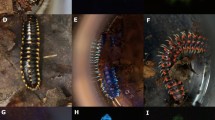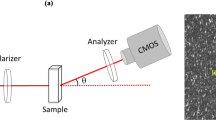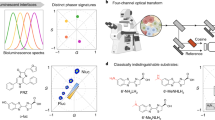Abstract
WHEN studying the morphology of a strain of Photobacterium fischeri, originally isolated from the surface of a luminous Baltic herring, we observed a surprisingly large number of L-bodies similar to those described by Johnson et al. 1. As the number of these L-bodies seemed to be related to the luminous intensity of the colonies a detailed study was considered worth while.
This is a preview of subscription content, access via your institution
Access options
Subscribe to this journal
Receive 51 print issues and online access
$199.00 per year
only $3.90 per issue
Buy this article
- Purchase on Springer Link
- Instant access to full article PDF
Prices may be subject to local taxes which are calculated during checkout
Similar content being viewed by others
References
Johnson, F. H., and Gray, D. H., J. Bact., 58, 675 (1949).
Stempen, H., and Hutchinson, W. G., J. Bact., 61, 321 (1951).
Clark, J. B., and Webb, R. B., J. Bact., 70, 454 (1955).
Klieneberger-Nobel, E., J. Gen. Microbiol., 3, 434 (1949).
Johnson, F. H., J. Bact., 44, 703 (1942).
Dienes, L., and Sharp, J. T., J. Bact., 71, 208 (1956).
Author information
Authors and Affiliations
Rights and permissions
About this article
Cite this article
SUNDMAN, V., HACKMAN, C. Correlation between Luminescence and L-Bodies in a Strain of Photobacterium fischeri . Nature 179, 149–150 (1957). https://doi.org/10.1038/179149a0
Issue Date:
DOI: https://doi.org/10.1038/179149a0
Comments
By submitting a comment you agree to abide by our Terms and Community Guidelines. If you find something abusive or that does not comply with our terms or guidelines please flag it as inappropriate.



